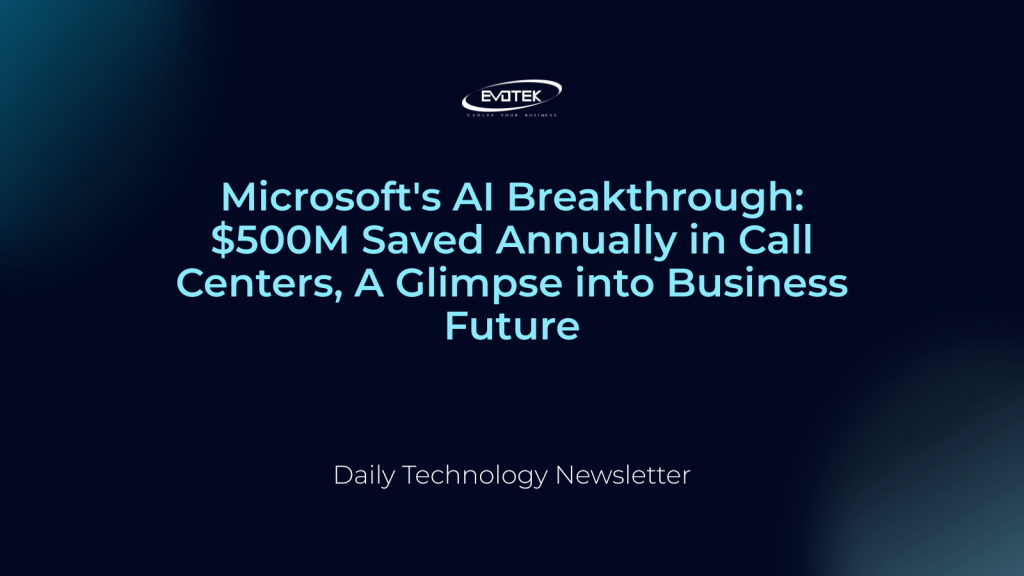Artificial intelligence is rapidly reshaping the corporate landscape, and Microsoft stands as a prime example. The tech titan recently revealed staggering cost savings of over $500 million last year, primarily through the strategic deployment of AI across its critical business operations.
According to insights shared by Microsoft’s Chief Commercial Officer, Judson Althoff, during a recent presentation, these monumental savings underscore AI’s profound impact on enhancing productivity across various functions, including software engineering, sales, and especially customer service.
AI Revolutionizes Customer Service and Sales Efficiency
The lion’s share of Microsoft’s half-billion-dollar savings originated from its call centers. By leveraging advanced AI tools, the company significantly improved employee productivity and boosted customer satisfaction, particularly in handling interactions with smaller clientele.
Beyond customer service, AI is also proving indispensable in sales. Althoff highlighted how AI solutions are empowering sales professionals to be more effective. Staff are utilizing Microsoft’s own Copilot AI assistant to streamline tasks such as identifying promising leads, accelerating deal closures, and ultimately driving a reported 9% increase in revenue generation. This demonstrates a clear trend where AI isn’t just cutting costs but actively contributing to top-line growth.
The Dual Edge of AI: Cost Savings Amid Workforce Changes
While Microsoft celebrates these significant AI-driven efficiencies, the revelation arrives amidst a period of considerable workforce adjustments for the company. These AI-fueled savings coincide with multiple rounds of layoffs, including a recent announcement impacting approximately 9,000 employees globally, following a previous reduction of 6,000 staff just months prior.
The timing has sparked discussions, particularly after a senior executive in Microsoft’s Xbox division, where layoffs also occurred, advised impacted staff to use AI to mitigate the “emotional and cognitive load” associated with job losses. This controversial advice highlights the complex interplay between AI adoption and its societal implications for the labor market.
AI’s Broader Impact: Reshaping Industries and Job Roles
Microsoft’s experience is a powerful indicator of AI’s burgeoning influence on the global workforce. Concerns about generative AI’s potential to disrupt jobs, particularly entry-level roles across various industries, are increasingly prevalent. For tech workers, specifically, the accelerating adoption of AI is indeed ringing alarm bells.
Other industry leaders echo this sentiment:
- Salesforce, for instance, reports that AI now handles 30% of its internal work. Their ‘Agentforce’ service enables enterprises to deploy automated agents capable of performing tasks traditionally handled by human workers, notably in customer service and contact centers.
- Meta CEO Mark Zuckerberg has publicly predicted that AI could undertake the work of mid-level engineers within the next year or so.
- Salesforce CEO Marc Benioff has hinted at the possibility of reducing new software engineer hires due to the internal successes achieved with agentic AI.
These trends suggest that while AI offers unprecedented opportunities for efficiency and innovation, it also necessitates a critical re-evaluation of workforce strategies and the future of work across almost every sector. Microsoft’s $500 million saving isn’t just a win for their bottom line; it’s a clear signal of the transformative power AI holds for businesses worldwide, prompting a necessary conversation about adaptation and reskilling in the evolving economy.

 日本語
日本語 한국어
한국어 Tiếng Việt
Tiếng Việt 简体中文
简体中文